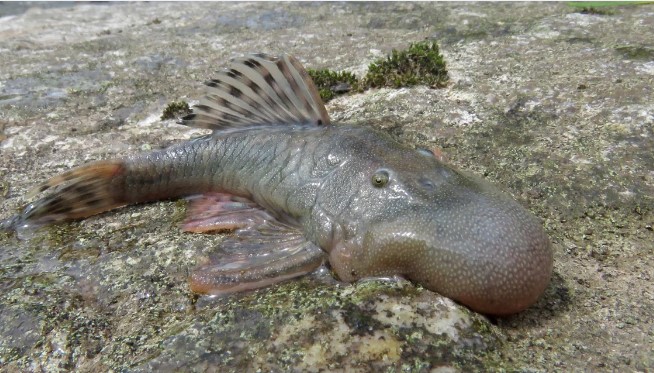
Peru’s unique biodiversity continues to astound scientists, with the discovery of 27 new species in the country. Among the remarkable finds are a bizarre blob-headed fish and an amphibious mouse, both of which highlight the incredible variety of life thriving in the region’s diverse ecosystems. These species, uncovered by researchers working in Peru’s remote jungles and rivers, offer a glimpse into a natural world that remains largely unexplored. Their discovery not only deepens our understanding of the planet’s biodiversity but also emphasizes the importance of conservation efforts to preserve these unique creatures.
The Mysterious Blob-Headed Fish: One of the most bizarre of the newly discovered species is a blob-headed fish, which has captured the fascination of scientists worldwide. The fish, characterized by its unusual, enlarged head and smooth body, was found in the clear waters of a remote river. Researchers are still trying to understand the evolutionary advantages of its peculiar shape, with some speculating that the large head could play a role in its feeding or defense mechanisms. The species is believed to have adapted to the specific conditions of the river’s ecosystem, showcasing nature’s incredible ability to evolve in response to its environment.
The blob-headed fish is just one of many unique species that have evolved to thrive in Peru’s diverse landscapes. The country’s vast network of rivers, forests, and mountains has long been a haven for rare and undiscovered species. As scientists continue to explore these habitats, it is expected that even more remarkable creatures will emerge from the shadows of obscurity.
The Amphibious Mouse: A Marvel of Adaptation: Another extraordinary discovery in Peru is an amphibious mouse, a small mammal that has adapted to both land and water. Unlike typical rodents, this mouse has developed webbed feet that allow it to swim, making it one of the few mammals in the region with such an adaptation. This species was found in the wetlands of the Amazon Basin, where the ability to navigate both terrestrial and aquatic environments is crucial for survival.
The amphibious mouse is not only a marvel of adaptation but also a testament to the resilience of life in one of the world’s most challenging ecosystems. Its discovery has sparked interest among biologists, who are eager to study how such creatures manage to thrive in environments that change drastically between wet and dry seasons. The amphibious nature of this mouse could offer valuable insights into the evolution of other species that live in similar environments across the globe.
The Richness of Peru’s Biodiversity: Peru is one of the most biodiverse countries on the planet, home to a vast array of species that range from tropical birds to aquatic creatures and elusive land mammals. The discoveries of the blob-headed fish and amphibious mouse only scratch the surface of what the country has to offer. These findings also reinforce the importance of preserving Peru’s natural habitats, many of which are under threat from deforestation, climate change, and human development.
In recent years, environmentalists and conservationists have ramped up efforts to protect the Amazon Rainforest and other critical ecosystems in Peru. This new wave of discoveries underscores just how much there is still to learn about the natural world and the urgent need to safeguard it for future generations. The newly identified species could hold key answers to understanding the delicate balance of ecosystems and how they might respond to environmental challenges.
Conclusion: The discovery of 27 new species, including the blob-headed fish and the amphibious mouse, shines a spotlight on the astonishing biodiversity of Peru. These unique creatures not only expand our knowledge of life on Earth but also remind us of the untapped potential of the natural world. As researchers continue to explore the remote corners of the country, who knows what other strange and wonderful species might emerge. With these discoveries, Peru once again proves that it remains one of the most exciting places on the planet for biological research and conservation efforts. The ongoing study of these new species is a testament to the resilience of nature and the infinite surprises it still holds.


